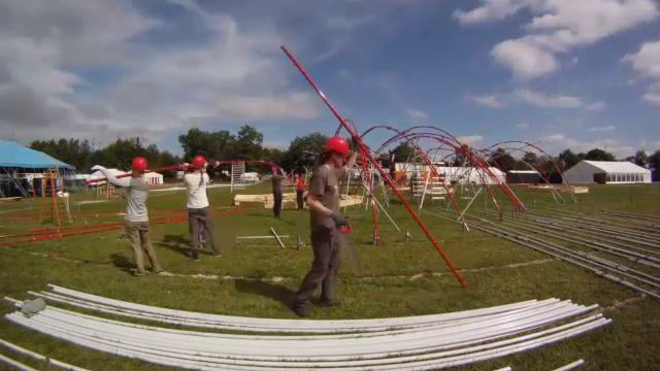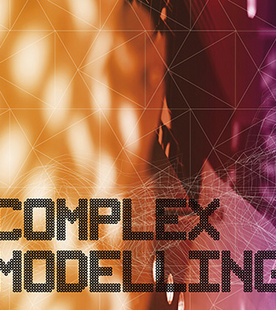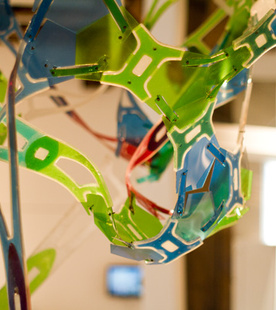Faraday Pavilion
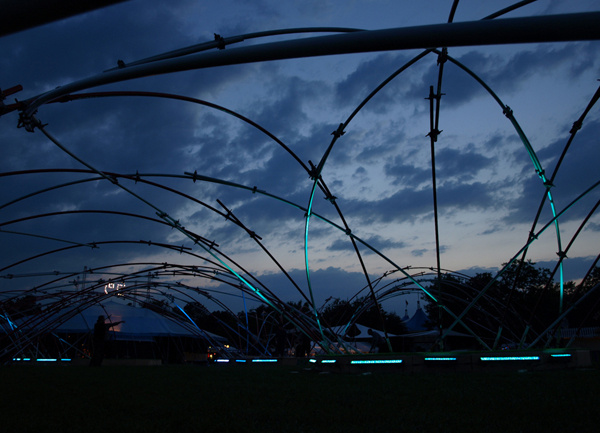
This project explores the use of fibre reinforced composites beyond their current framework. In addition to traditional qualities of lightness and strength, composites possess a high capacity for bending. To explore this potential, this project develops a bending active gridshell, taking point of departure in a brief to provide a seating and relaxation space for the 2012 Roskilde Festival. Working with Fiberline’s 40mm fibre reinforced polymer (FRP) structural section, the design comprises three seating ‘poles’ which generate a larger field of approximately 30x40m, whose extents and geometry are defined by 7 FRP gridshells.
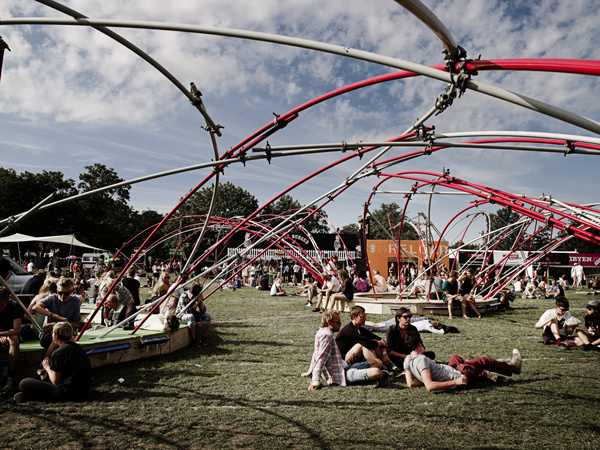
To include bending, the geometric definition of a gridshell needs to be determined through simulation - to bend each element as it will be bent on site. The normal approach is to define an initial flat grid that is then deformed into a double curved 3D form through the application of shaping forces and finally locked into position. The need for the entire grid topology to begin in an inital relaxed state, however, restricts what geometries and topologies are possible.
This project develops an alternate approach that utilises the capacity of a force-based modeling approach to nest descriptions of material behaviour at multiple scales, to incorporate bending, and to closely match the design process with the analysis and on-site assembly process. The approach to material-oriented digital simulation developed during the project links a top-down design intent with a bottom up understanding of material behaviour. The topology of the gridshell is not predefined - instead, the placement and path of elements is instead determined by a desired target geometry and a form-finding process that incorporates the bending capacities and behavioural tendencies of the FRP tubes into a digital design model.
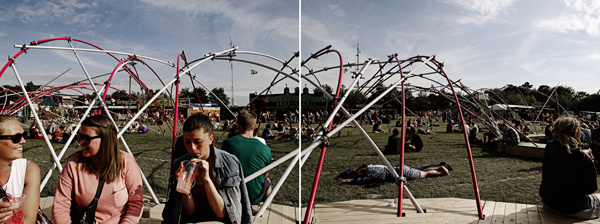
The Faraday Pavilion was installed at Roskilde Festival, June -July 2012.
Design
Paul Nicholas
Ali Tabatabi
Engineering
Christoph Gengnagel
Elisa Lafuente Hernandez
Support
Det Frie Forskningsråd, as part of the 'Designing Material Materialising Design' PostDoc for Paul Nicholas.
Photography
Anders Ingvartsen.


